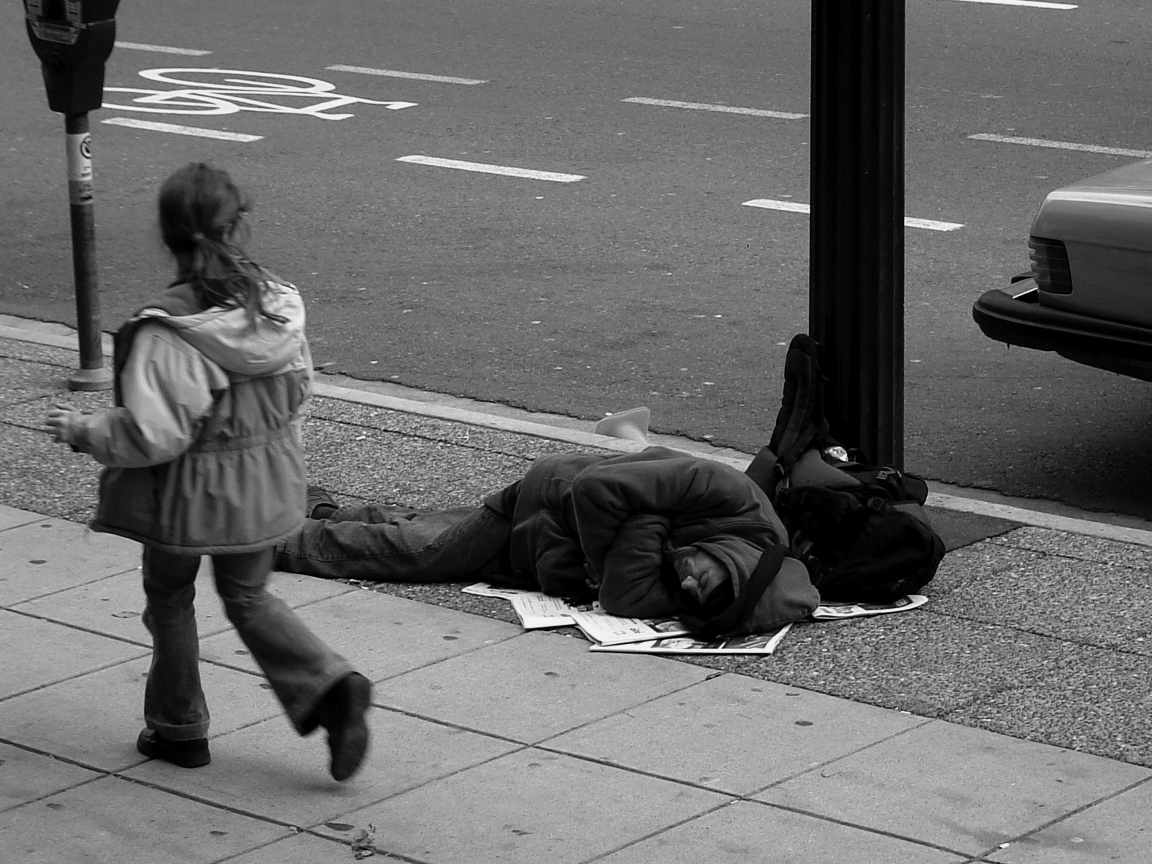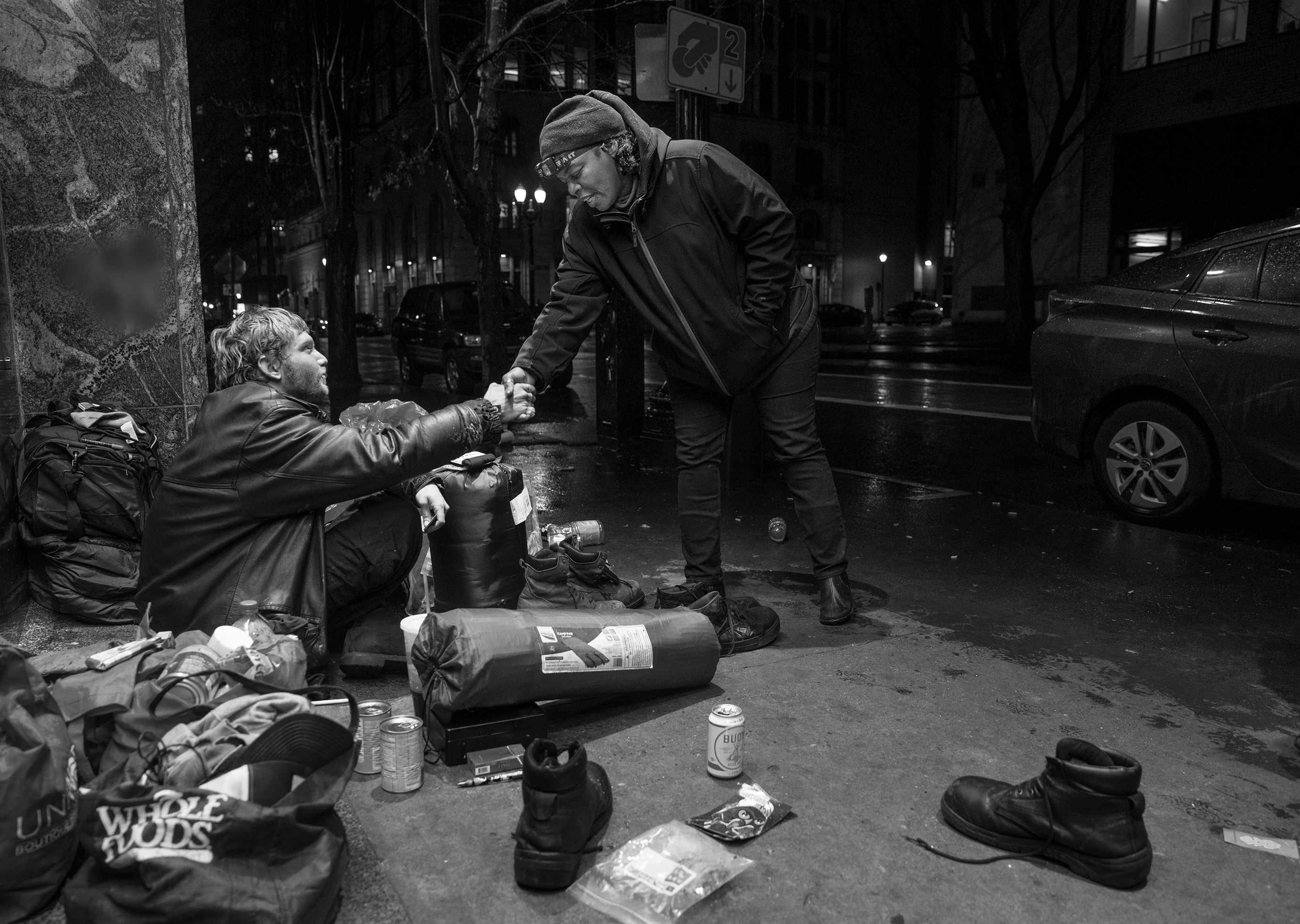Product Strategy:Helping Vulnerable Communities
Introduction
Part of my responsibilities at Motorola was leading the experience design for the public safety and community engagement product portfolio. This included CityProtect (www.cityprotect.com), a portal for connecting with local police. Features include registering security cameras, reporting crime tips, and filling out police reports or service requests. My team also supported the software for public safety agencies to process this information and share updates.
One of the organizations we partnered with was a police department community outreach program in Canada. A focus area of theirs is servicing the vulnerable population in their community, primarily people experiencing homelessness or precarious housing situations and they reached out to us to see how we might be able to help.
Hypothesis
Somewhat surprisingly, during preliminary research we discovered that many people experiencing homelessness have or have access to a mobile device. Our hypothesis was that we could connect people with public safety and community resources through technology.
Challenges
Often there is an adversarial relationship between the police and members of vulnerable communities. A perception of the police is that they are protecting ‘normal’ people by disbanding or relocating encampments and arresting ‘vagrants’ or forcing them out of public spaces. Some people experiencing homelessness struggle with substance abuse and may have had negative experiences with police related to that. A significant portion of police calls for service are related to mental illness that they are not usually equipped to handle.
Distrust of the police can make it extremely difficult for them to help some people who need it most. People who are at increased risk of victimization and physical harm because they are living in exposed or unsafe conditions and have been abandoned, dismissed, or otherwise failed by government, public, and social services may feel like they have nowhere to turn and help is not available for them.
Approach
We had a lot of research and insight from police partners, but we wanted to better understand the target community. We began collaborating with an organization that provides a variety of programs and services with a goal to help end chronic homelessness.
After a few discussions about the project and the people they help, we began to understand a bit more about some of the underlying causes of homelessness and how other efforts to create technology to serve this population were or weren’t successful.
As a typical first step in a user experience design project, we set up a persona workshop to start identifying key users, their goals, and jobs-to-be done. We planned on using this as the basis for a User Journey Map.
It didn’t go quite as we expected...

Key Workshop Takeaways
There are no ‘typical’ members of this community to model personas from
There is such a wide range of age, gender identity, sexual orientation, cultural and ethnic heritage, literacy, addiction issues, physical and mental abuse and disabilities, and so many reasons why and how people become homeless, that accounting for all those variables would generate a list of personas that was too large to be helpful.
The journey is rarely linear, it’s fluid and unstable
Our initial thinking was that if we identified a path that people take from being in a precarious housing situation to a stable one, we could design to solve for that. It turns out that homelessness is not usually the cause, it's the effect of behavior or situations that people can't control. As with many government and social plans that have failed around the world, finding people homes isn't really a solution.
Everything is emotional, everything is stigmatized, and everything is an oppressor
We tried to understand the jobs-to-be-done and goals of our target users. Turns out this isn’t very straightforward either. Depending on the situation, which can literally change from one hour to the next, tasks and how to accomplish them can vary. Goals may be simple like ‘find something to eat’, but there is an additional emotional facet attached to the stigma and oppression associated with their situation.
Accessibility is especially important
Users likely have older devices and cellular data rates in Canada are among the highest in the world. So the application needs to be lightweight. We also need to be aware of a wide variety of literacy and language differences.

Project Goal
The goals and needs of the users are not simple. The use of technology merely to accomplish tasks will have very little effect on improving their agency or dignity. If we modify the context to be emotional rather than just simply practical, we can design an experience that is not only useful, but thoughtful and helpful as well.
You don’t need a stable residence to live a quality, fully realized, and important life. And you don’t deserve to be oppressed or marginalized because you find yourself in that situation.
Our project goal was:
Use technology to help homeless and precariously housed people live a full life despite their situation
Design Objectives
Emancipate
We can help remove barriers and help understand and assess the difficulty of things to bring freedom from stigma and help create a sense of ownership over your life.
Enrich
How can we move beyond just survival? Where are there opportunities to contribute? Are there free or low-cost events that you can attend? It’s not about charity, it’s about enabling.
Empower
There are ways to take control of your life and not feel like you are at the mercy of circumstances. Can we provide a space to be vulnerable or admit that you need help without judgment?
Exploration
Based on the goal and objectives, we began developing some concepts. Through discussions and ideation, two ideas kept resonating. The first was creating an environment to give people tools and resources that support making their own decisions. The second was something we discussed with the community resource partner. One of the biggest problems that people experiencing homelessness have is boredom. It’s something that we hadn’t considered, but makes quite a bit of sense. Without employment, obligations, or chores, there is an abundance of free time. That time can be spent getting in trouble, engaging in destructive behaviors, or may be a constant reminder of their situation that leads to depression or despair.
Direction
Instead of just a list of resources, what if we designed a way for people to manage their time? Being able to control your schedule can lead to empowerment by supporting responsibility and autonomy. Your time is owned outright and can’t be taken or given away. Planning for the future can help you move beyond simply thinking about what’s next, but can free you up to think about what’s possible. We will focus on emotional design principles and techniques to help provide an experience that is empathetic and goes beyond just simply accomplishing tasks.
Control
Tools, resources, and knowledge to act on their own decisions and structure their lives.
Looking Forward
It’s not about constantly trying to find resources, thinking about what’s missing or what happened in the past, it’s about preparing for what’s next and envisioning a better future.
Sharing
Not just connecting, but actively engaging with people’s’ lives, events, resources, successes, failures, and futures.
“It isn’t possible to ‘empower’ someone... People have to empower themselves. Our role is to encourage and support the decision-making environment, and to give people the tools and knowledge they need to make and act upon their own decisions. By doing this, we can help people reach an empowered state.”
Goldsmith, M. (2020, May 4). Empowering your employees to empower themselves. Harvard Business Review. Retrieved June 1, 2022, from https://hbr.org/2010/04/empowering-your-employees-to-e

Concept
My Day
As this concept wireframe shows, the initial entry point provides information about the day. Features like goal tracking and milestones help reinforce positive experiences. Cloud storage would be available for photos and important documents because hard copies are frequently lost or destroyed. Appointments with counselors or social services can be shared and tracked.
The main goal is showing people that they have control over their lives. They can look forward to what's coming, providing a sense of hope and a vision of a better future.
Prototype Development
We worked with a team of six graduate interns from the University of Illinois to create a functional prototype across five two-week sprints, for a total of 10 weeks of production. I served as project lead, planning the sprints and coordinating the delivery of design assets.
Since we had such a short time window, it was important to define a minimum experience that provided the most value for users to evaluate. We focused on the agenda functionality, limited to planning for food and shelter. We also develped the sign-in experience to test user understanding of and comfort with a simplified visual passcode system.
Adding Events
We can help remove barriers and help understand and assess the difficulty of things to bring freedom from stigma and help create a sense of ownership over your life.
This is the core functionality of the application. Finding resources or services and planning ahead is the primary value hypothesis we are evaluating. Since we didn’t have time to create the portal for service providers to manage data, we ‘seeded’ the application with food and shelter options. Eventually, the data could expand to support clothing, recreational activities, and healthcare and medical services.
This evolved from the initial wireframe that has a checkbox list. This version supports viewing additional details and utilizing device options like tapping an address to open a map application or tapping a phone number to make a call.
Graphical Sign In
We found quite a bit of academic research regarding the use of visual patterns as passcodes. Since we were working with public data and very intentionally avoiding collecting personal information, we thought about ways that we could lower the barrier to entry but still provide recoverability if the device was lost, pawned, or stolen. There were a few technical challenges to overcome, but we were able to create a working sample for evaluation.
Testing
A hands-on evaluation of the functional prototype was performed with a representative user group. The findings were incredibly helpful for defining the future direction of the project.
Notable insights
Devices are often stolen, so features like journaling or storage of personal data was not well received.
Management of scheduled appointments with social or government services is a very desirable feature, especially if we could provide a direct connection with the person they are meeting with.
People want to see what the facilities and people are like before they choose to utilize them. A single source for community information is desirable. Currently the information is fragmented, difficult to discover, and outdated.
Future Research Questions
- What services, content and updates do users want to access from providers?
- What do users want to customize and how much customization is expected?
- What data or metrics would be helpful for service providers to know at an aggregate level?
- Which data would be most helpful for service providers?
- Which features and functionality are most helpful to community members?
- Which data would users share with trusted service providers vs. share more generally?
- What other factors influence a user’s decision to share anonymous data?
- What is the effect of gamification on interest and perceived use?
What I've Learned
This is an incredibly complex space and designing in it challenged many assumptions and UX methodologies I’ve used before. But having a design hypothesis that is informed by research and a strategy for evaluating that hypothesis is still key to creating software that is useful.
I’m grateful for the opportunity to explore emotional design and inclusivity principles in more detail. There are some great insights that can be applied more broadly to business software that is typically more outcome-focused and linear. How can we create technology that can support people at a more individual and personal level? I look forward to continuing to try and figure this out.